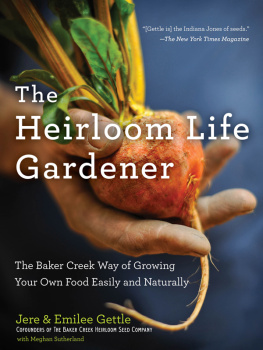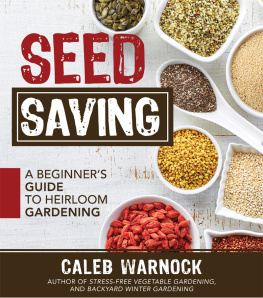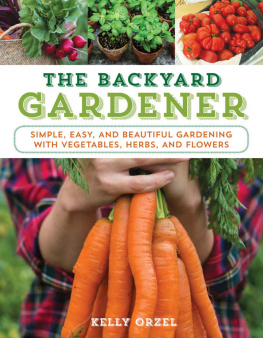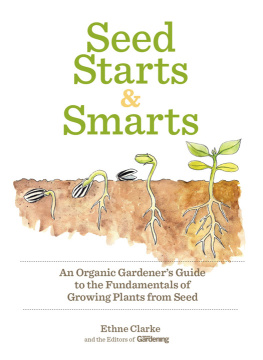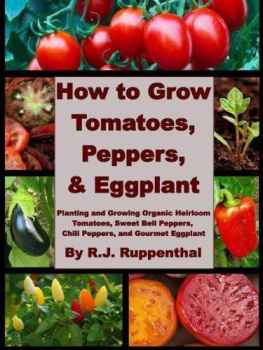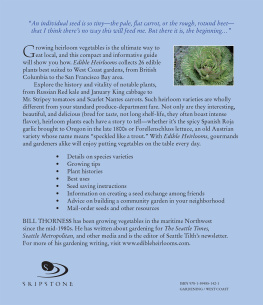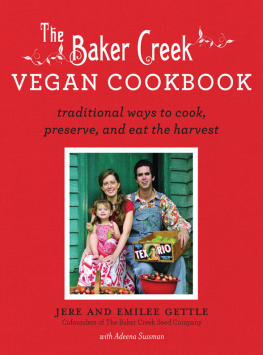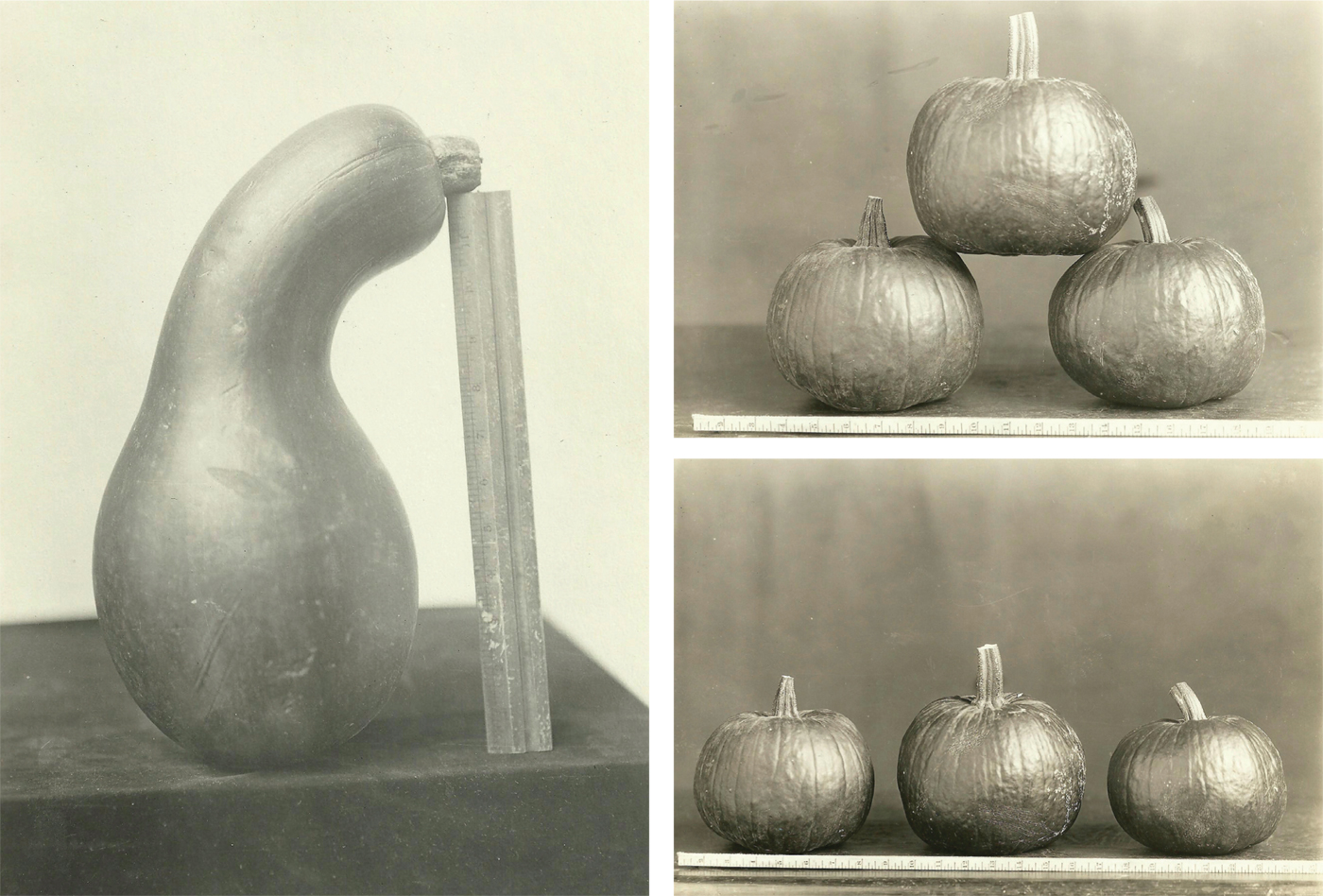There is a grow-your-own-food revolution happening in America right now, and vegetables have never been more exciting. Farmers markets are popping up everywhere, seed sales to backyard gardeners are increasing, and more people are going out of their way to find out where their food comes from.
This book is a celebration of that movement, for people who are interested in starting a garden of their own for the first time, as well as for experienced gardeners who want to learn more about heirlooms.
Some people think you need special skills, a lot of land, or expensive equipment to cultivate a vegetable garden. But actually all you need is access to soil, water, sunshine, and seeds. More and more gardeners these days are choosing to plant heirlooms rather than the seeds that are on the shelves at big box stores around our country. Heirlooms are seeds that have been around for hundredsand sometimes even thousandsof years, that have not been altered by scientists in a chemical-soaked lab, and theyre the heart and soul of my business, the Baker Creek Heirloom Seed Company. Our mission is to promote pure, healthy food that is free from genetic modification and toxic chemicals, by educating people about natural gardening methods and historic seeds.
Food has become pretty generic these days. Anybody can pull into a fast-food place, grab a burger, and drive away without thinking where their value meal came from. This is such a change from how it used to be, when people had to work to grow most everything on their dinner plate. At Baker Creek, we like to remind people what life was like before fast-food chains became Americas go-to local food sources.
By now, most people have noticed the unconventionally beautiful jolie laide spectacle of wrinkled yellow tomatoes at the farmers market or seen them on menus at gourmet restaurants. You might think that tomatoes are the only kind of heirlooms out there. But actually, there are thousands of different kinds of heirloom vegetables on earth! The Heirloom Life Gardener is an introduction to that world, a celebration of the joys of gardening and traditional growing methods, and a primer on the centuries-old practice of seed saving. It is our invitation to you to join us in living a sustainable, delicious, and healthy heirloom life.

The Gettle family with some heirloom tomatoes.
At the Baker Creek headquarters, which is located on a farm in the Ozark Mountains in Missouri, we have 176 acres, 6 gardens, and 25 different kinds of animals. Our approach is always natural, which simply means that we use traditional farming methods such as mulching, nontoxic organic sprays, and crop rotation. We work the land in ways that are similar to how it was always worked until the 1950s, which is when poisonous chemical pesticides and fertilizers became popular.
As far as gardening tools and equipment go, there seems to be a gadget for everything these days. But because I prefer to have as little as possible between me and the good earth, I use only a few tools when Im out in the garden.
You may not agree with all of the suggestions and recommendations in this book. Working a plot of land is a very personal experience, and everyone who does it has opinions on the best way to do it. There are a ton of questions that come along with gardening: When should you sow your tomato seeds? Whats the best way to deal with beetles or to trellis a pole bean? Ill answer some of those questions, but Im not trying to be comprehensive. This book is a jumping-off pointnot an encyclopedia that covers every planting scenario in every climate zone.
Rather than making you a master gardener in a couple hundred pages, I instead hope The Heirloom Life Gardener helps you discover how much joy a $2 packet of seeds can bring to you and your family, whether you grow on your back forty or on a four-foot plot in your backyard.
In 2011, because of the way that the worlds food supply is structured, almost all of the seeds currently being developed in America are created by the giant chemical agribusiness companies for large-scale farm operations rather than for gardeners like you. This is because gardening took a backseat to convenience in the latter half of the twentieth century. The younger generations of Americans have been brought up thinking, Why should I dig in the dirt for my food, when I can buy what I need at the grocery store?
But the grow-your-own-food revolution happening in America is changing the way we approach food in significant ways. According to the National Gardening Association, the number of households growing food crops increased 10 percent between 2007 and 2008 and another 20 percent in 2009. In 2010, there were four times as many farmers markets in America than there were in 1994. The momentum is astoundingand so inspiring to witness. More and more people are embracing a locavore or growcavore lifestyleinstalling rooftop gardens or digging up corners of their lawns and putting in vegetables.

Our friend Dave Kaiser enjoys summers bounty with the neighbor children.
Not only is growing food and eating locally gratifying and delicious, its also vital to the continued momentum of this movement. When you buy food from local farmers and organic growers, youre doing much more than just getting healthy, chemical-free food. Youre also putting money back into your own community, instead of into the pockets of profit-hungry execs at multinational, government-subsidized corporations. Living a locavore life boosts the economy around you and helps sustain independent growers and food suppliers. The more you shop with organically minded organizations and small farmers, the stronger their businesses become. The stronger they are, the better off you and your local food supply will be in the long run. It will also help our nation develop real communities againplaces where people can provide for one another and find local jobs, while living in a more caring, balanced, and earth-friendly way.

